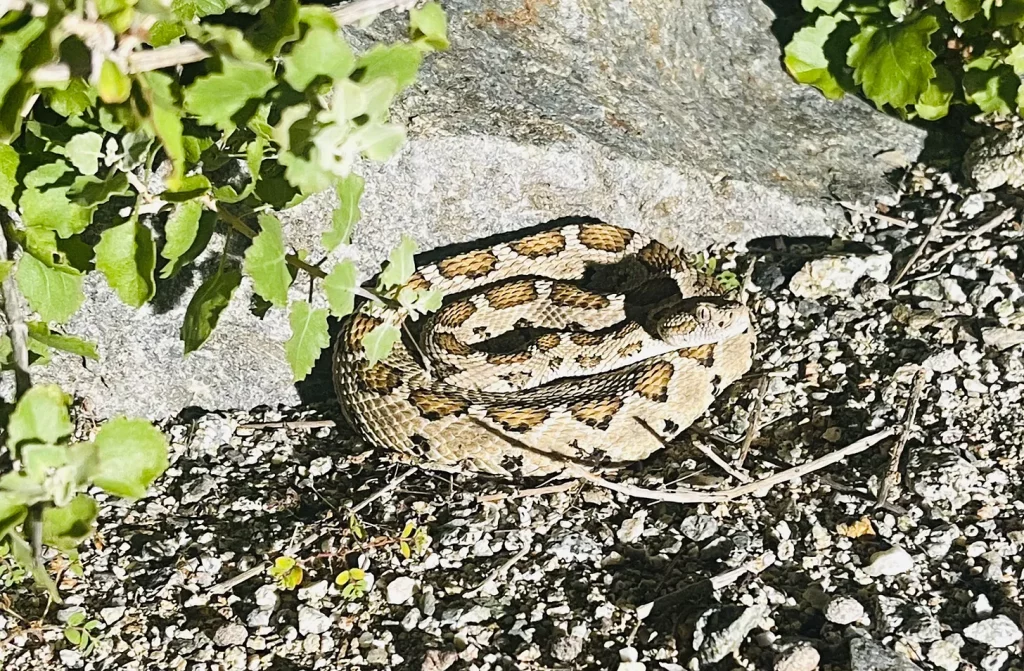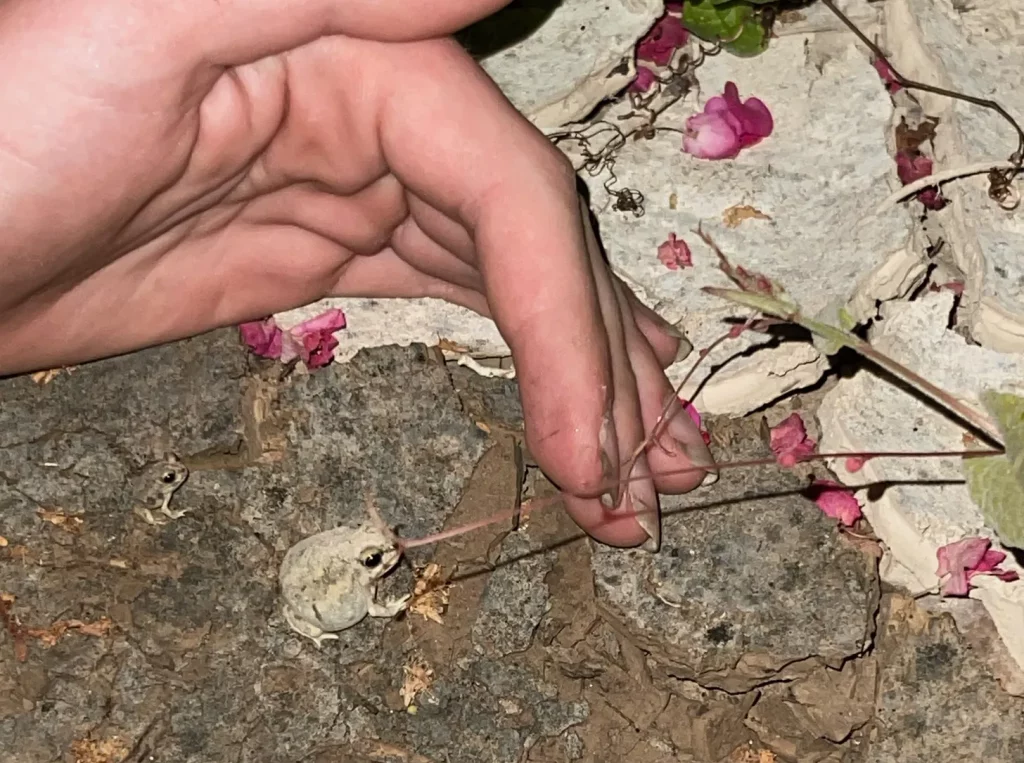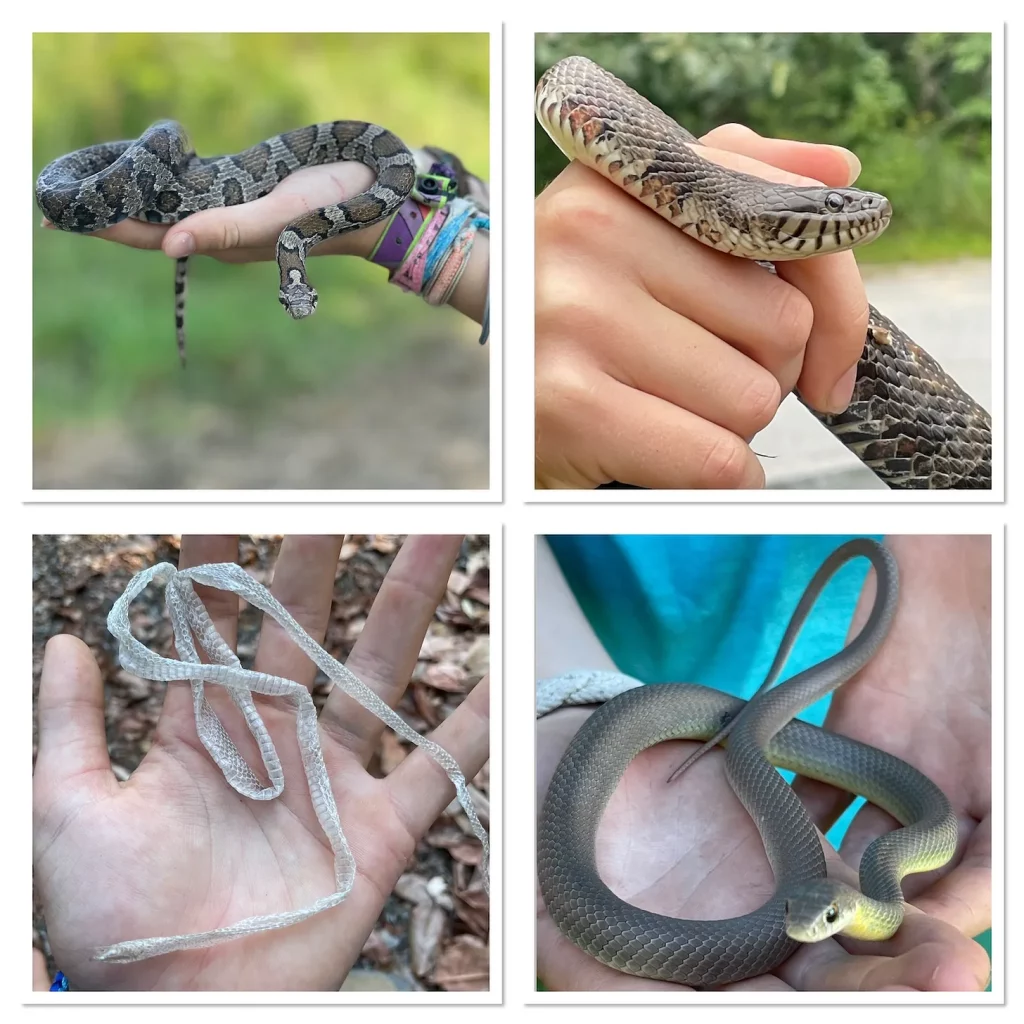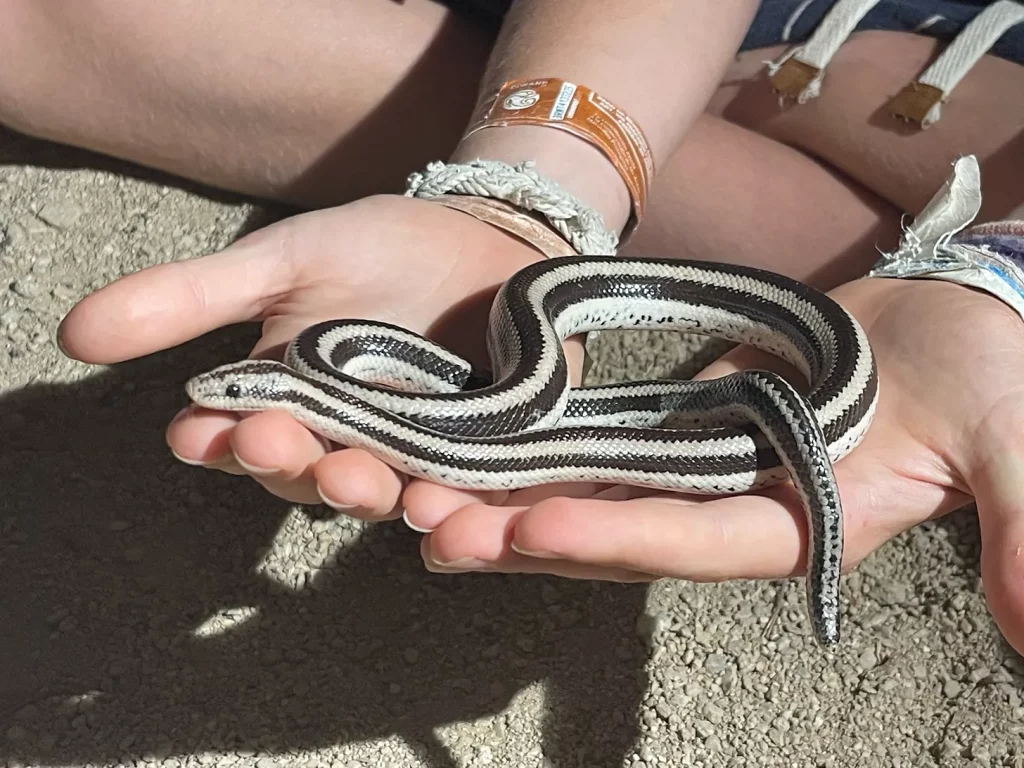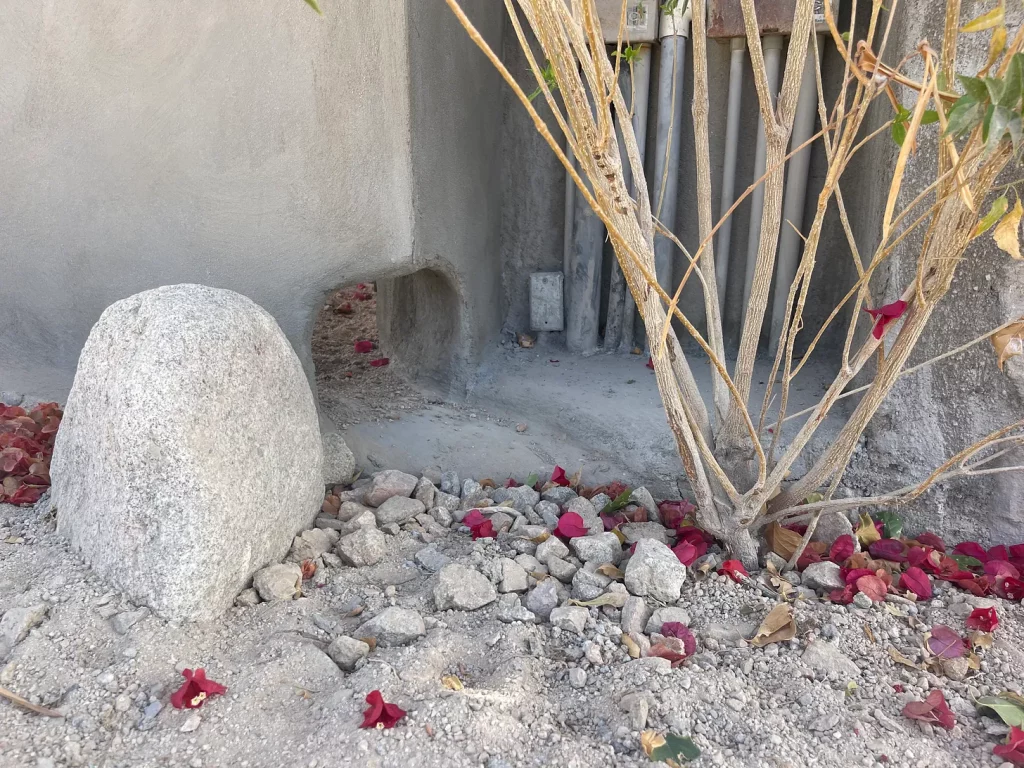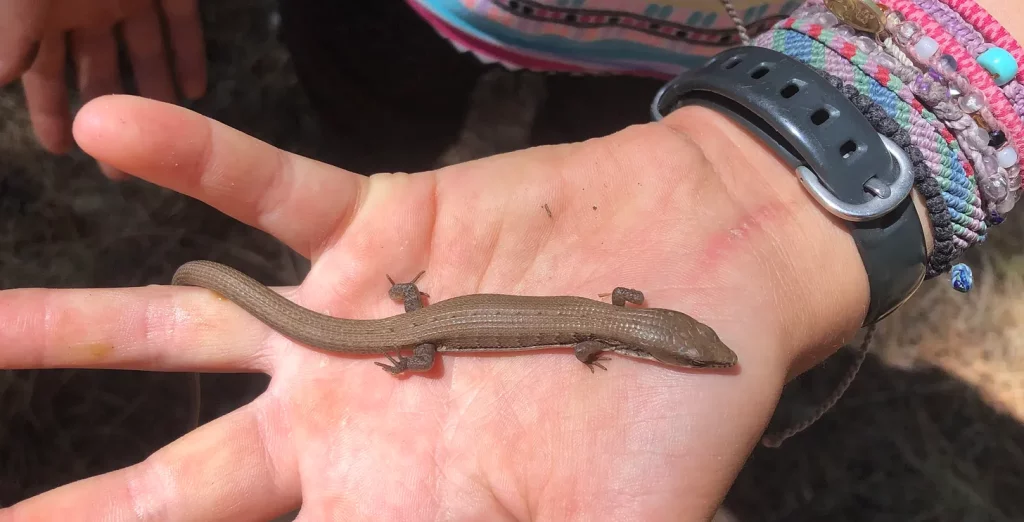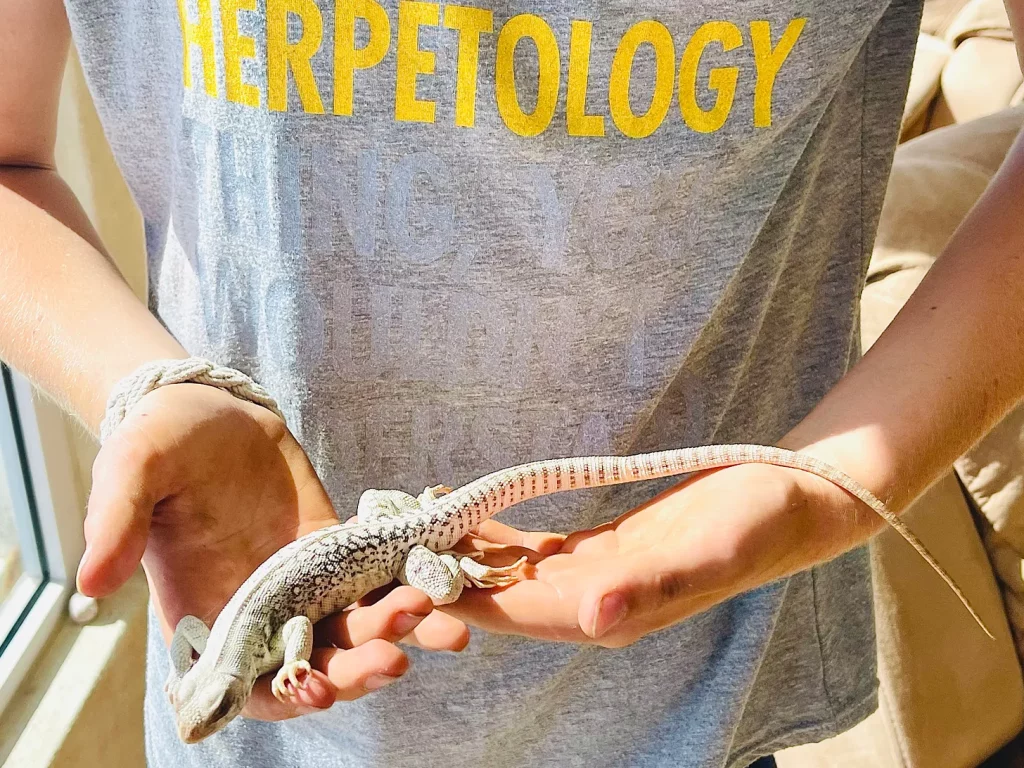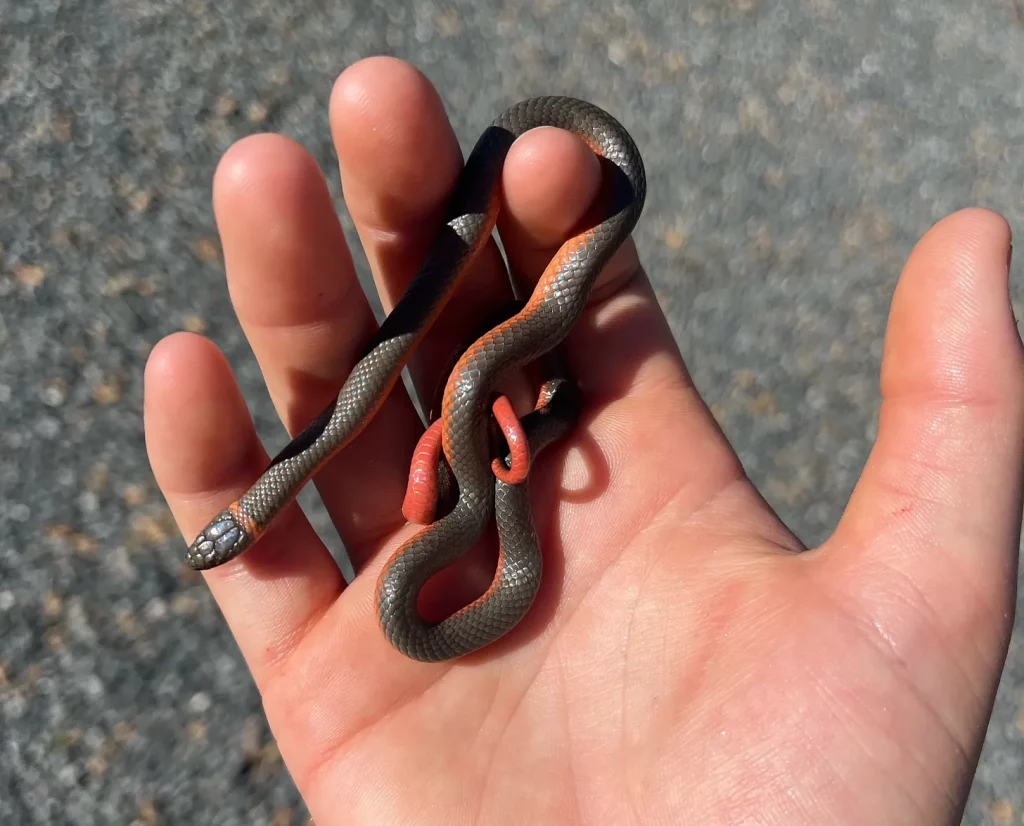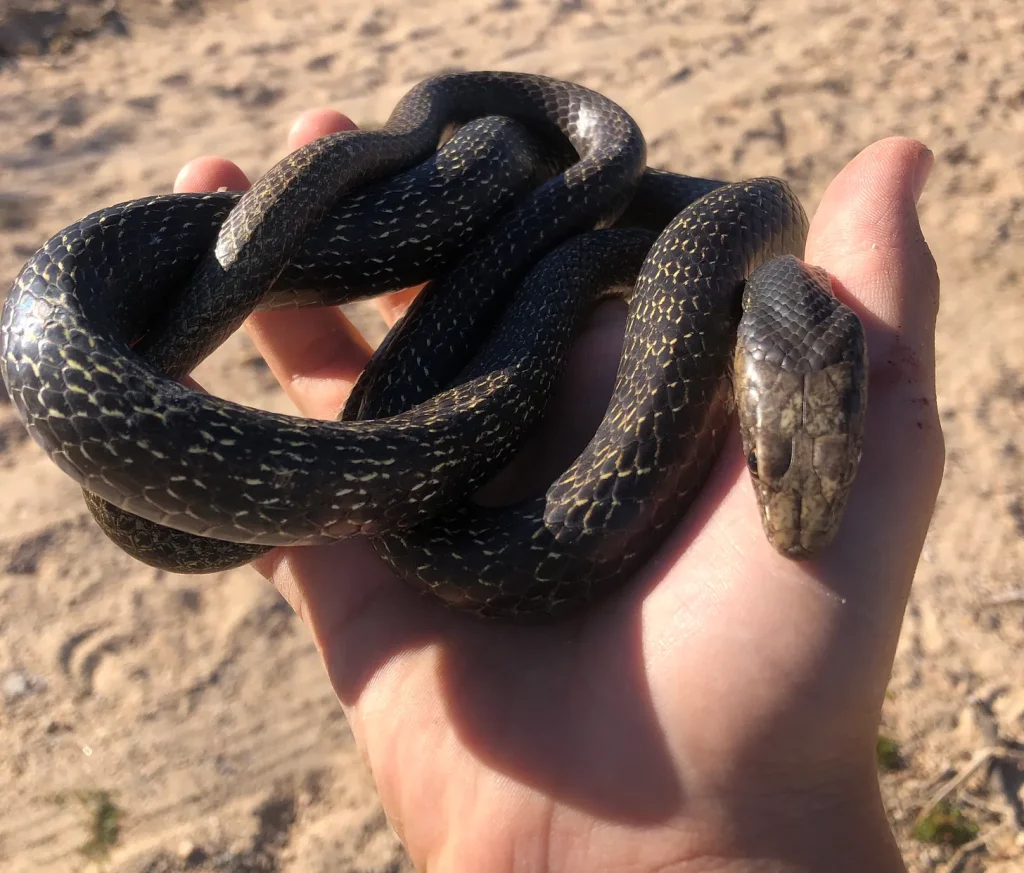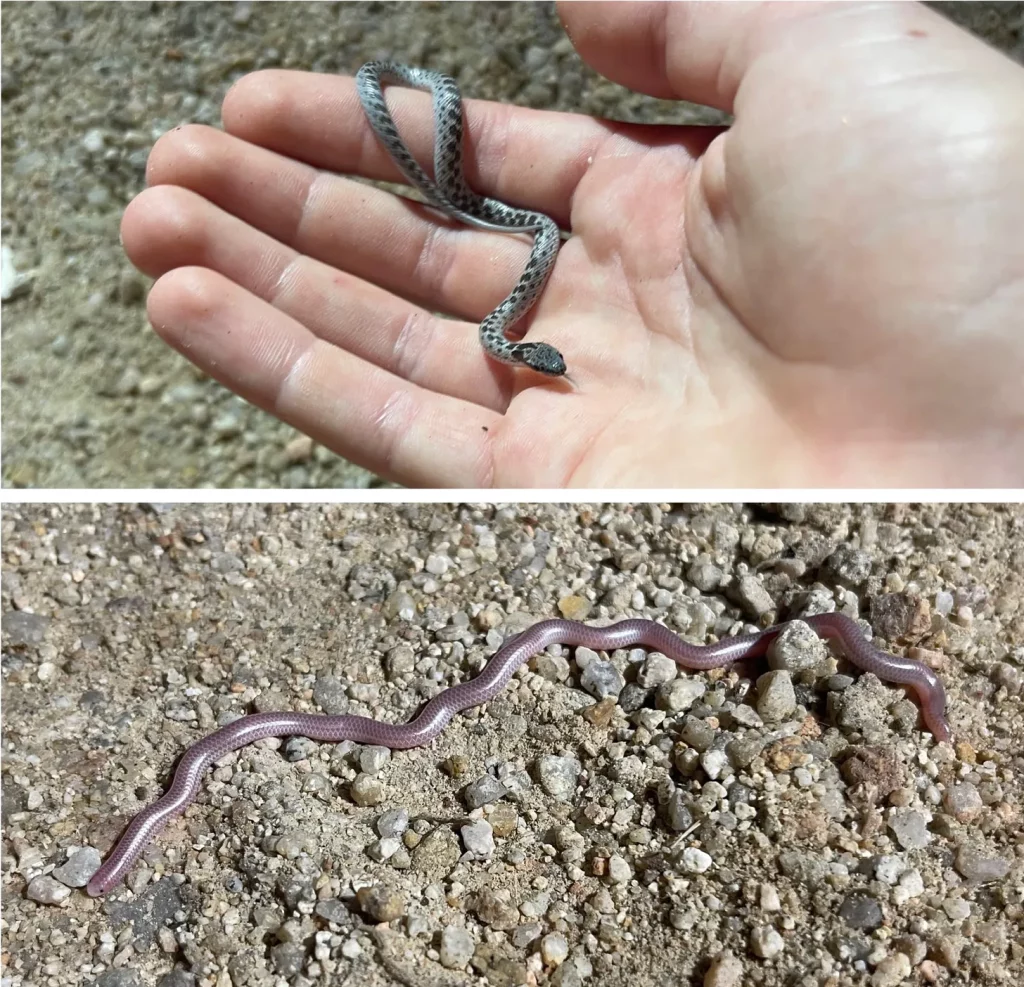
We are now in early November and, recently, I have noticed a major spike in baby snakes and lizards. This means there are more reptiles than usual at this time, and we need to be very careful driving at night, because they are crossing the roads in abundance.
A few days ago, around 9pm, I heard a sudden exclamation outside, followed by “SNAKE! Snake!” Rushing out of my camper into our outdoor living area, I saw a small Cape Thread Snake (Rena boettgeri) slithering across the rug. I picked it up and started photographing it, then headed out to release it in a nearby bush. On the way to the bush, I noticed another small serpent on the ground, right in front of me!
Upon closer inspection, I concluded it was a hatchling Coast Night Snake (Hypsiglena ochrorhynchus). I picked it up, though now I was holding a night snake, a large spotlight, a phone for photography purposes, and an extremely squirmy thread snake. Clearly this was not sustainable, so I put the light down, just to discover that this left me in complete darkness. I picked the spotlight back up and, to my dismay, the thread snake squirmed out of my hand and right into a crevice inside the spotlight.
At this point I had no idea what was happening, so I called for backup. The night snake made a break for it, successfully escaped my grasp and slithered off into the brush. A friend arrived and started to assist me but, unfortunately, the thread snake was inside the back of the spotlight, rendering the light useless in finding the escape artist. Eventually we got another light and discovered the thread snake hiding behind the battery case, and it came out easily. I then tracked down the night snake, and eventually everything worked out fine.
